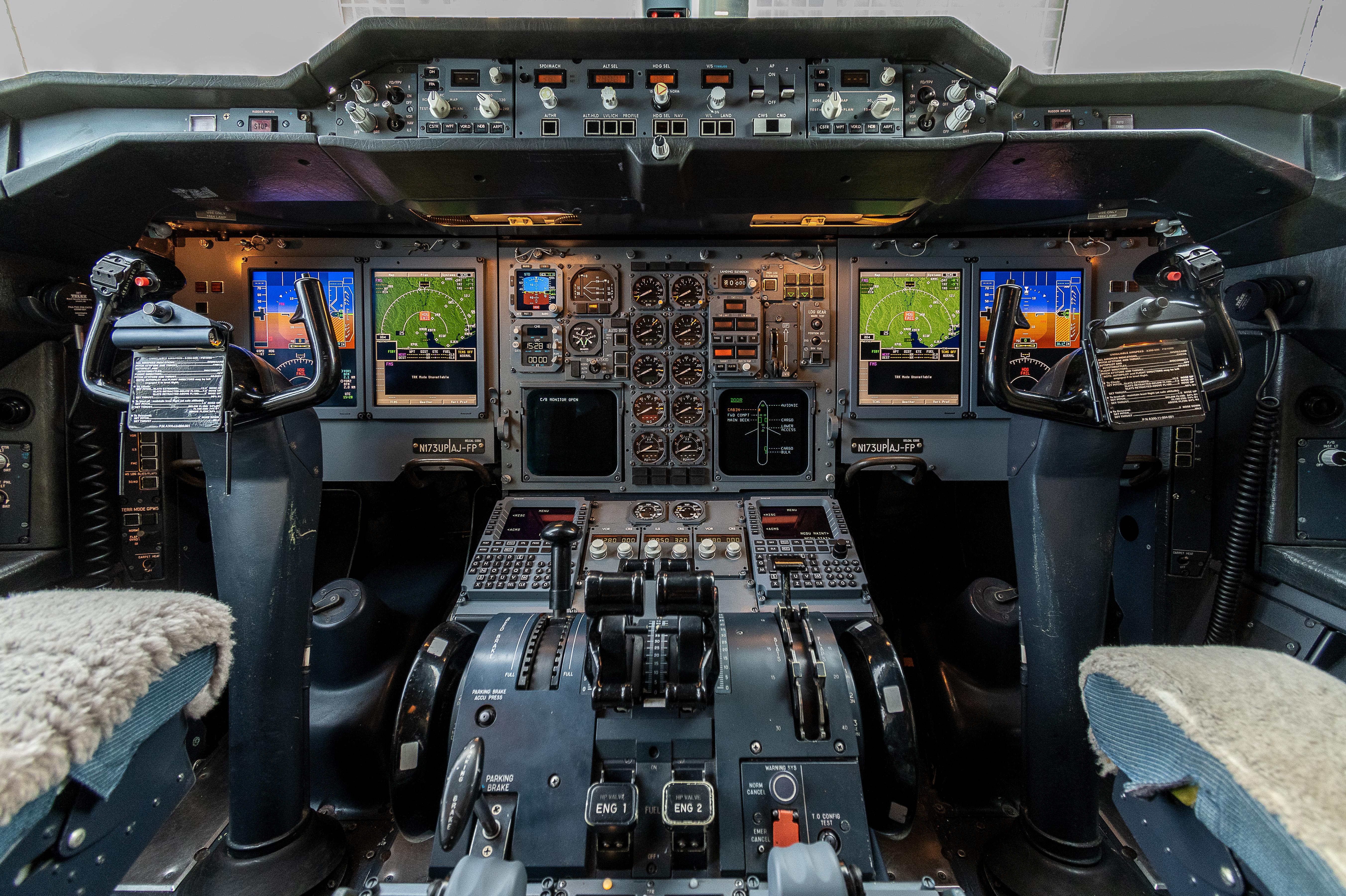
UPS is in the home stretch of a five-year project designed to add 20 years of useful life to its Airbus A300-600 freighter fleet, finalizing agreements with two maintenance shops that will install upgraded avionics and other components on 51 aircraft.
The shops, which UPS is not naming until signed contracts are in place, will each start single upgrade lines in May or June, said Ed Walton, the package carrier’s director of engineering. A third line is possible for surge capacity if needed.
If all goes as planned, all 51 aircraft will have upgraded cockpits by the 2022 holiday peak season. They will join the first modified aircraft, recently delivered to UPS after two years of flight-testing. That aircraft is slated to re-join the UPS fleet in the coming weeks following a scheduled C-check and needed U.S. FAA approvals of modified training and manuals, Walton said.
UPS, Honeywell, and Airbus announced the project in May 2017.
“We really tasked the team to take a look at everything on the airplane that they felt could be obsolete over the time frame we were looking at, which was 20 years,” Walton said. “That’s where the effort came to settle on the project that we’ve got now—the modifications and why each one was selected.”
The upgrade is built around a new avionics suite based on Honeywell’s Primus Epic product. Airbus led integration on the project, which netted the manufacturer a type certificate extension, via a service bulletin, that can be sold to other A300-600 operators, said Olivier Criou, Airbus head and chief engineer of A300/A310 programs.
For UPS, the upgrade brings both more immediate flexibility and “future-proofs” to an important sub-fleet, Walton said. Immediate improvements include upgraded weather radar, new standby instruments, a digital aircraft communications addressing and reporting system (ACARS), and a new flight-management computer (FMC) with more memory.
The current A300-600 FMC has about 200 kb of memory. As the airline’s U.S. flight navigation database grew, it had to be broken into five segments to fit on the FMC, with only segment one loaded at a time. The aircraft then flies within the region covered by the segment. Moving it to another region means spending 45 min. changing the database.
“An airplane that would fly, say, from Newark to Louisville would pretty much need to go back to the Northeast to be able to fly with the same database,” Walton said. “Mechanics spending 45 minutes updating a database is 45 minutes that could be spent doing pre-departure checks or” fixing other issues, Walton added.
The new flight management computer can take the entire database, and updates take about 2 min., Walton said.
Modernizing the avionics also ensures that UPS can continue to operate its 52 A300-600s with maximum efficiency within the subfleet’s all-North American network. New approach procedures will be added to the A300-600 database as soon as they are available.
“If your database doesn’t include those departures and arrivals, you [can] get kicked out of the queue and have to hold until [air traffic control] has the time to deal with you,” Walton said. “By having this we future-proofed this airplane.” The A300-600s fill a key role in UPS’s fleet, fitting between the airline’s Boeing 757s and 767s and operating at most four cycles/day, all within North America. They average 17 years of age, but more importantly, the oldest airframe has flown just 14,500 cycles, well below the model’s extended service life target of 42,000 cycles.
The upgrades give the carrier confidence that it can operate its A300-600s through 2040 or so, Walton said. They will fly alongside 757s and 767s, which also have upgraded cockpits featuring Collins Avionics equipment. The 757 upgrades are complete, while the last 767 in the fleet is expected to be done in April, Walton said.
“The A300 really fits our network very well,” Walton said. “We’ve taken care of these airplanes. We have no concerns at all about the airframes being able to go to 2035 and beyond.”
Note: This article has been updated to show the correct service life target for the A300-600F.





